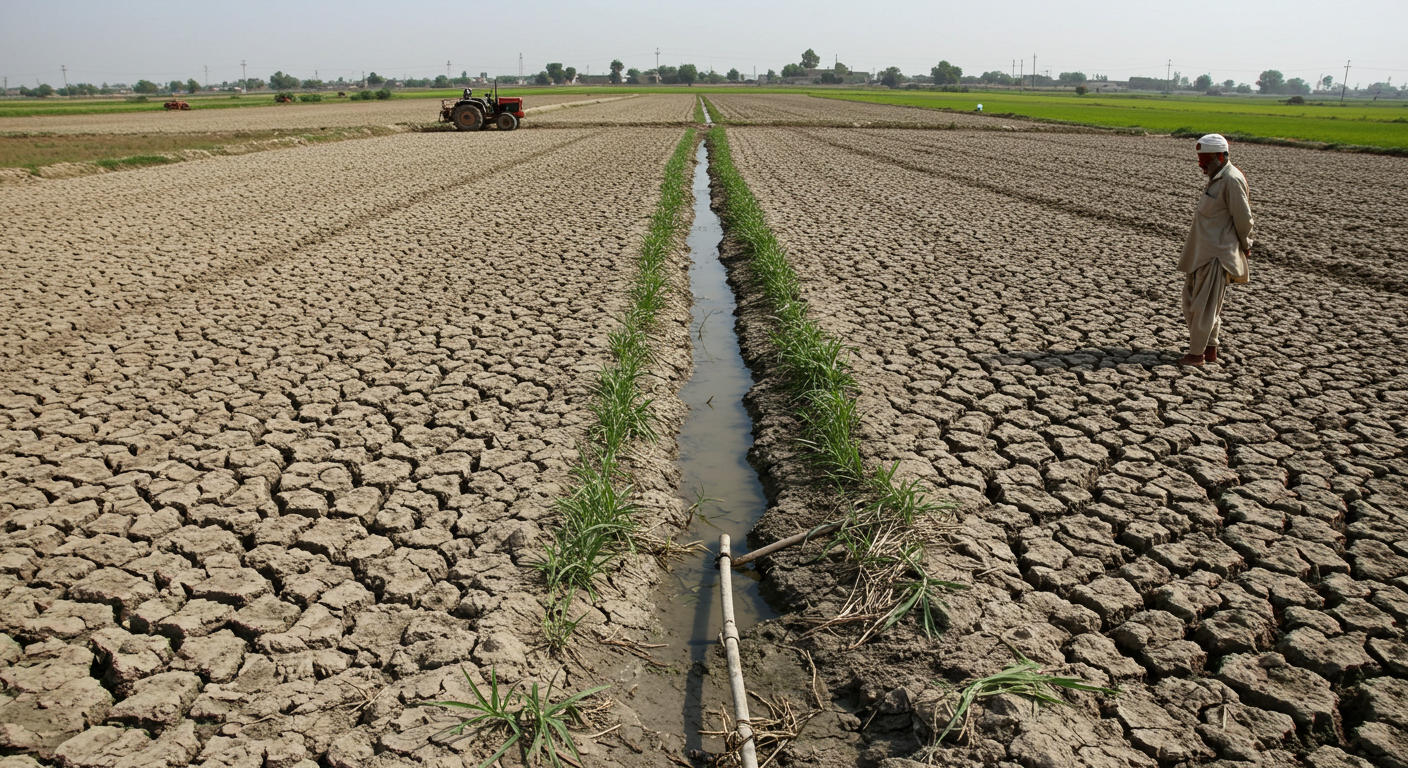“Halting Growth: Pakistan’s Agriculture Sector Struggles Amid Water Crisis & Policy Flaws”

Pakistan’s agriculture sector is facing one of its toughest challenges in recent years, grappling with worsening water shortages, flawed policy decisions, and growing provincial tensions. Experts warn that without urgent reforms, the country’s food security and rural economy may spiral further into crisis.
1. Slowest Growth in Nearly a Decade
The Economic Survey 2024–25 reveals that Pakistan’s agriculture sector grew by just 0.56%—marking its weakest performance in nearly a decade. This dismal performance is primarily due to major declines in key crops like cotton, wheat, and sugarcane — with losses ranging between 13% to 19%.
2. Weather Extremes & Misguided Policies
Severe rains and flash floods in Punjab and Sindh destroyed standing crops and disrupted transport routes. Additionally, inconsistent government policies and sudden subsidy changes left farmers in a state of confusion and instability. Farmers say they lack proper support and access to modern techniques to recover from such climatic blows.
3. Water Conflict: Sindh Protests Resource Injustice
The province of Sindh has raised serious objections over what it sees as an unfair distribution of water. Despite being one of Pakistan’s largest agricultural producers, Sindh is reportedly receiving less water due to upstream canal projects in Punjab. Farmers have held protests, accusing the federal government of neglect and injustice.
4. Food Security at Risk: Calls for Long-Term Strategy
Institutions like ZTBL are emphasizing the need for fast-maturing crop varieties to adapt to climate changes. Moreover, the National Assembly’s Food Security Committee has demanded a 20-year roadmap to safeguard Pakistan’s agriculture — including seed quality, fertilizer availability, modern irrigation, and farmer training programs.
5. Government Action – Still a Long Way to Go
While efforts like the formation of the National Agri-trade and Food Safety Authority (NAFSA) are underway, critics argue that much remains on paper. Legal and bureaucratic delays are holding back impactful implementation. Meanwhile, water tables are falling, and most districts are reporting lower irrigation access.
Quick Summary Table
| Key Area | Current Situation |
|---|---|
| Agricultural Growth | Just 0.56% in FY 2024–25, major crop losses |
| Water Availability | Drought in several regions, inter-provincial disputes |
| Food Security Plans | ZTBL initiatives, calls for faster crop development |
| Policy Challenges | Mismanagement, delayed reforms, unstable subsidy structure |
| Future Outlook | Proposed 20-year roadmap, NAFSA pending full activation |
Conclusion:
Pakistan’s agriculture sector stands at a critical crossroads. If structural reforms, climate-resilient strategies, and equitable water distribution are not immediately prioritized, the country could face a deeper food and economic crisis. Farmers, analysts, and civil society are all asking the same question
